Brownstone Boys: How Green Can You Go? Energy Efficient Renovating in Brooklyn and NYC
Whether you want to do your part to lower your carbon footprint or maybe just keep the energy expenses in check, there are lots of eco-friendly options to consider when renovating.

Windows and doors are the most important areas where air can escape
Editor’s note: Welcome to the 79th installment of Brownstone Boys Reno, a reader renovation diary about renovating a brownstone in Bed Stuy. See the first one here. They also blog at www.thebrownstoneboys.com.
One thing is for certain in an unrenovated historic Brooklyn home, it’s leaky. And we’re not talking about the roof. Most modern forms of energy weren’t even invented when they were built so energy efficiency had no bearing on the building process. A common goal of Brooklyn renovators is to improve it but many wonder how far they should go. Insulation, solar panels, windows, heating/cooling systems, gas vs. electric… Whether you want to do your part to lower your carbon footprint or maybe just keep the energy expenses in check, there are lots of eco-friendly options to consider when renovating.
We’ve been interested in the concept of Passive House and set out to learn more about how to achieve the best energy efficiency and understand what makes sense in Brooklyn renovations. Never heard of a Passive House? If not, you’re not alone, but it most certainly is going to dominate the future of building and renovating. New York City updates energy codes every three years or so, and it’s getting more and more demanding. Everything is moving in that direction. The concept focuses on creating a building that uses very little energy (especially for heating and cooling). Some can even achieve zero (yes, zero) energy expense, and there is a level that qualifies for certification. Even if your goal isn’t to have a certified Passive House, many of the concepts can be used to greatly improve your home’s energy efficiency. Cost and scope of work are big factors in deciding what you can and cannot do.
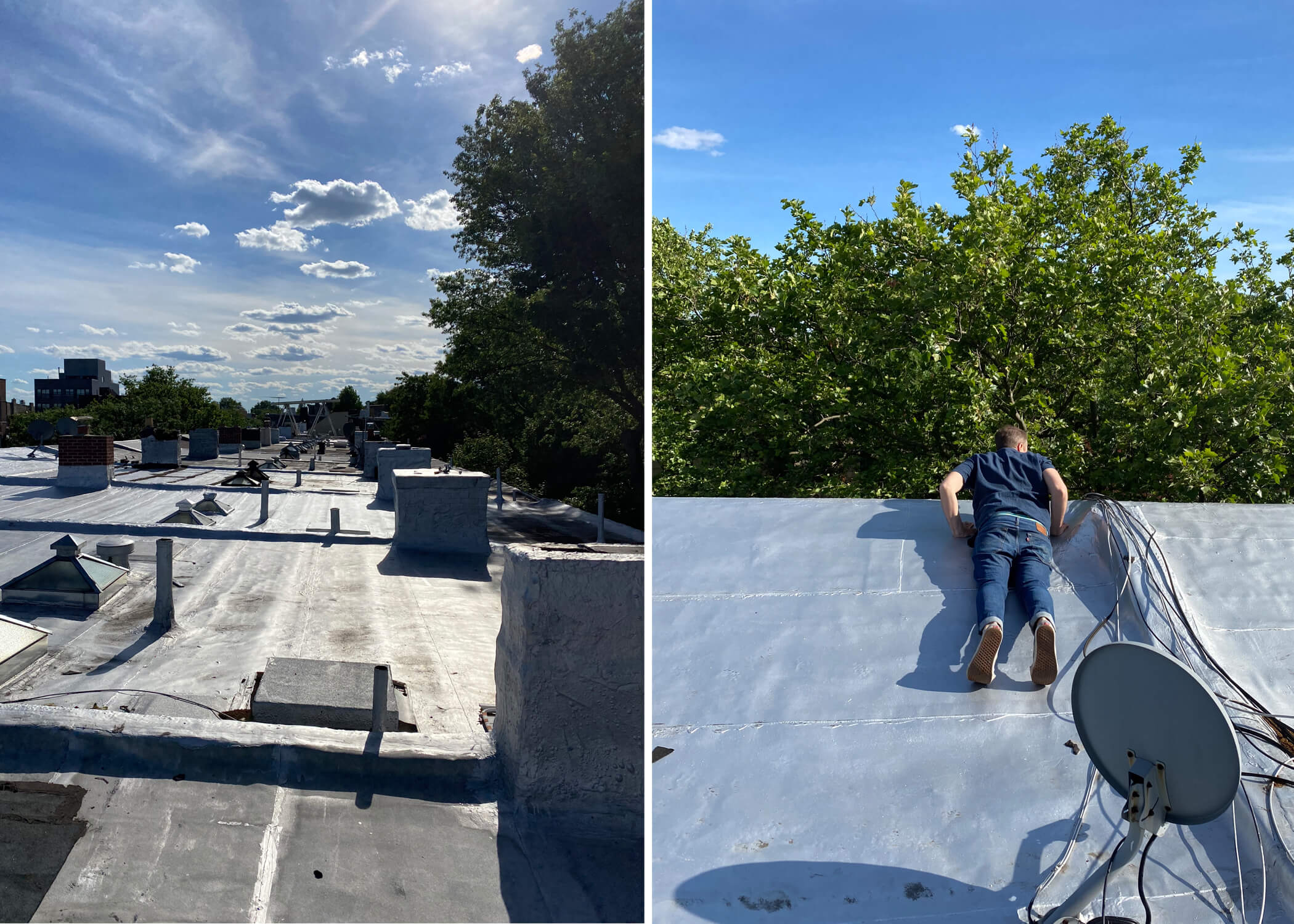
What’s the most important thing?
One of the first things that comes to mind for most people when they think about lowering energy bills are solar panels. They can be part of a holistic approach to energy efficiency but they are certainly not the most important. Passive House’s main concept is about making the home virtually airtight. On average, a home can lose up to 12 to 15 times the air volume of the house in one hour. That is the equivalent of buying a dozen eggs and throwing away 11, over and over again. A home can be certified Passive only when it’s reduced to .6 air change per hour. It’s a dramatic improvement and would require virtually no cost for heating and cooling. So the most important thing that you can do and the first place to put money is in creating an airtight envelope.
How to do it?
To create an airtight envelope the exterior walls need to be stripped to the studs/masonry and the ceiling under the roof needs to be opened up. It’s a big job and a major renovation. All areas need to be super insulated with the latest insulating technology that is several times what code requires. Triple-glazed windows need to be installed. Finally, a layer of insulating material may also have to be installed under the cellar slab. This should create a home that is virtually airtight.
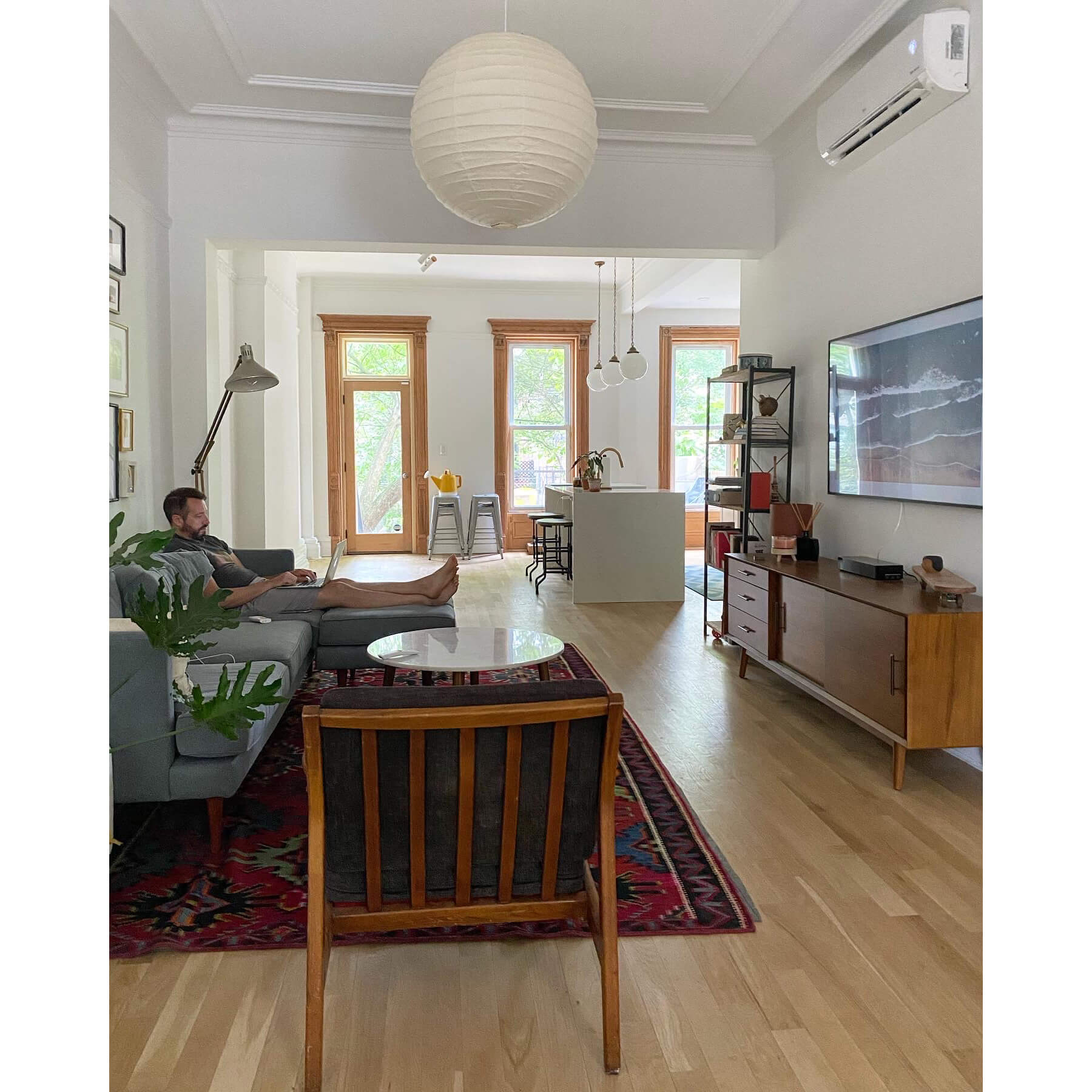
What about ventilation?
The next question is, with such an airtight house, how do you get fresh air in without breaking the envelope? A device called a heat recovery ventilator solves the problem. It takes the warm stale air from inside the house, pulls the warmth out of it, and uses it to warm the fresh air it pulls in. So you can have all of the fresh air you need without letting all your heat out of the building.
So what about solar?
Solar can be an important part of the puzzle to reduce your energy use and carbon footprint. If your home is well insulated it is possible for solar panels to produce 100 percent of your energy requirements during the day. They may even produce more than you need and excess can flow back into the grid. At night when your solar panels aren’t producing electricity you can draw power from the grid; however the cost can be offset by credits you can receive for the electricity that flows back to the grid during the day.
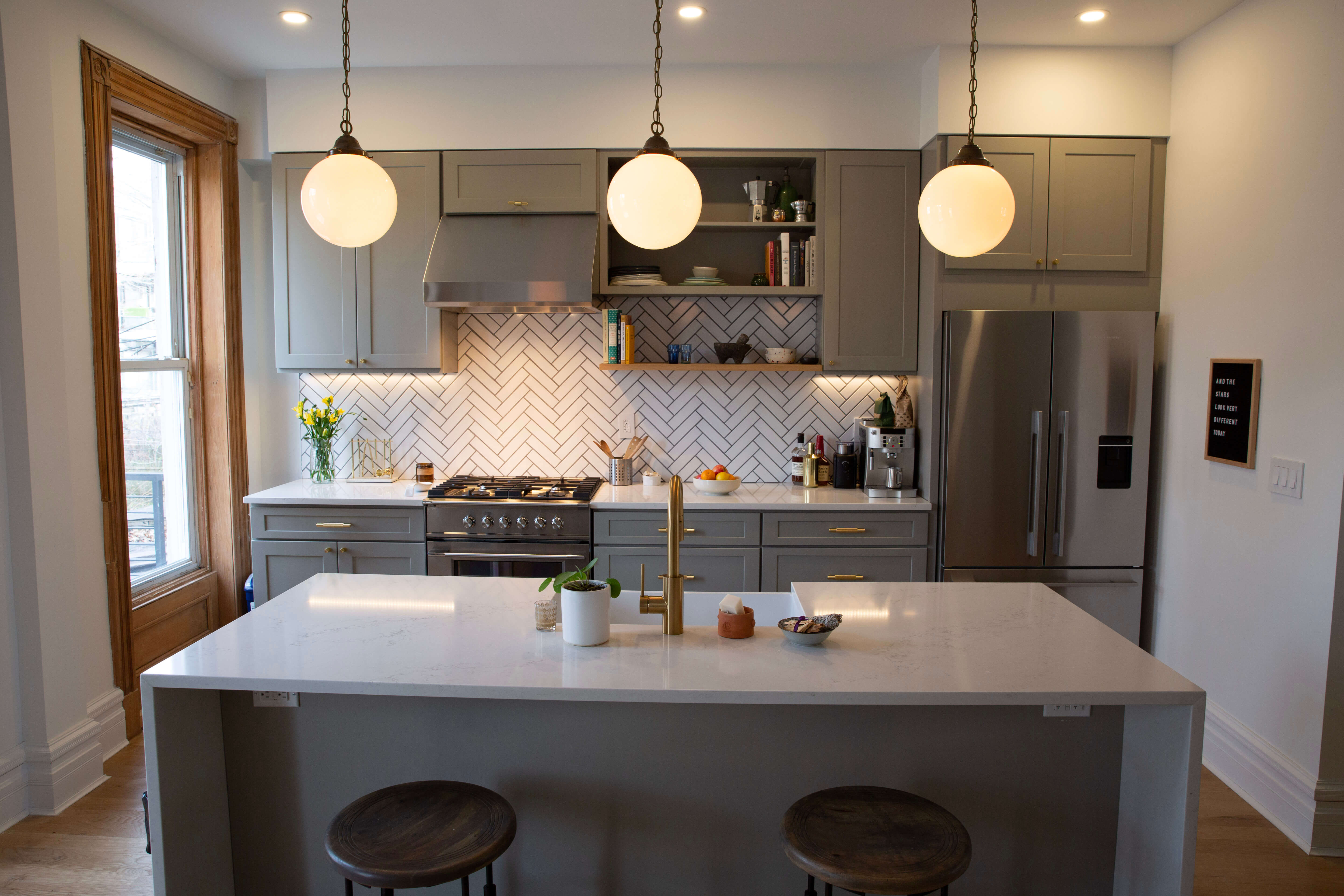
What’s better, gas or electric?
We have good news that sounds like bad news. Your gas stove might have to go. It is the standard belief in most of America that gas is better for cooking than electric. Whether or not you are among those who hold that belief, what is a fact is that natural gas is a finite resource. We inevitably will be using less and less of it. Burning it is not that good for us or the earth. It releases CO2 and other harmful emissions into our homes and the atmosphere, while it transfers only a measly 35 to 40 percent of its heat to the pot or pan on the burner. Not to mention that it’s dangerous as it courses through aging infrastructure. A Passive House must be 100 percent electric. Modern induction cooktops transfer up to 90 percent of heating energy to the pot. As long as the energy powering it is 100 percent from a renewable source (hello solar panels), it has a neutral impact on your carbon footprint. Also, if you talk to anyone who has an induction cooktop, they swear by it. Finally, there are places where there is a moratorium on new gas lines for all of these reasons. It’s only a matter of time before NYC follows suit for new construction and renovations.
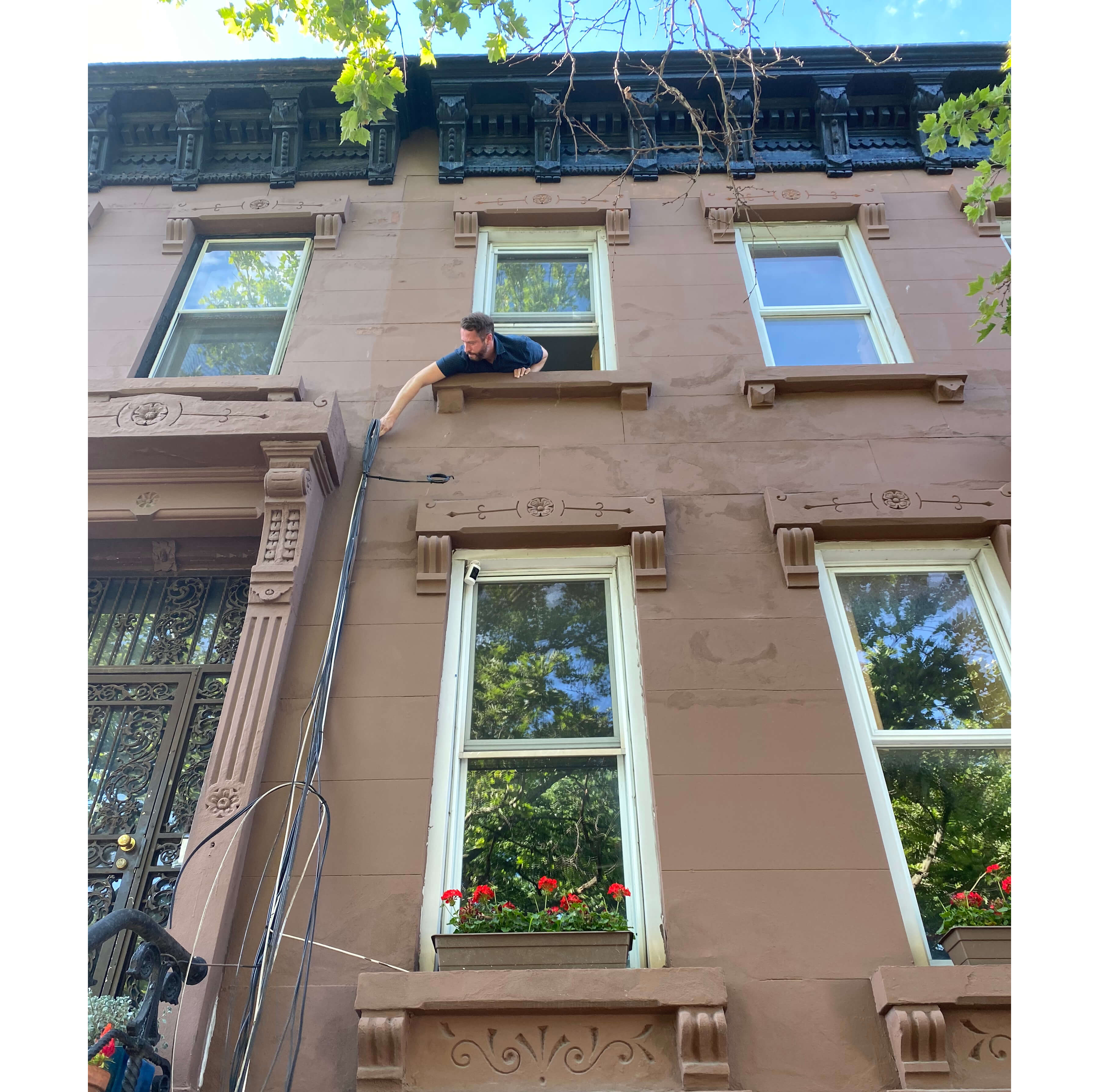
How do I heat my home if I can’t use gas?
Have you heard of a heat pump? You will be hearing more and more about them, especially in New York City. There is a movement to install more heat pumps for heating and cooling. A heat pump’s technology is hard for people to wrap their head around. It removes heat from the exterior air and pulls it inside to heat the home. Sounds easy right now while it’s 90 degrees outside, but what about when it’s 20 degrees? Even though you might not want to spend long periods of time outside when it’s that cold, believe it or not there is still heat in the air that the system can use to heat the home. The best heat pump technology still has 100 percent heating capacity down to about -14 degrees Fahrenheit. Pretty safe for even the worst winters in NYC. Also, with your super insulated envelope you might not need to run it much!
Other options to improve home energy efficiency
One of the leakiest things in most homes are the windows. Well maintained original windows with storms can be more energy efficient than replacement windows. Addressing windows and other leaky spots such as under and around windows and doors can greatly contribute to a more airtight envelope. Also, as you change appliances consider converting to electric. As electricity moves away from dirty coal to renewable sources your home will be better positioned to capitalize on them.
We’re still learning and technology is still improving, but we’re excited about the direction we’re going. Energy codes will rightly be moving to remove greenhouse gas producing and less efficient technology. Renovators are becoming more savvy and the technology is becoming more affordable. All things point to these topics becoming a much bigger part of the renovation conversation now and in the not so distant future.
[Photos by Brownstone Boys unless noted otherwise]
Related Stories
- Brownstone Boys: When an Old Chimney Makes Furniture Placement a Nightmare
- Brownstone Boys: Top Surprisingly Big Expenses When Renovating a Historic Home
- Brownstone Boys: Can You Cool and Heat Your Home Exclusively With a Mini Split and Heat Pump?
Sign up for amNY’s COVID-19 newsletter to stay up to date on the latest coronavirus news throughout New York City. Email tips@brownstoner.com with further comments, questions or tips. Follow Brownstoner on Twitter and Instagram, and like us on Facebook.






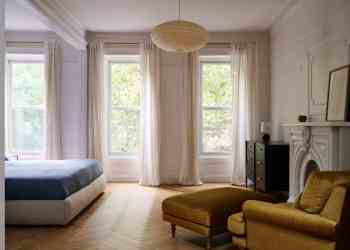


What's Your Take? Leave a Comment